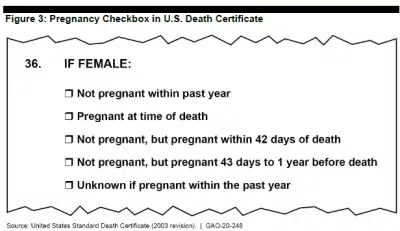Maternal Mortality in the United States
April 11 was the International Day for Maternal Health and Rights. One crucial issue related to maternal health is maternal mortality—that is, when a woman’s death is related to her pregnancy.
While the maternal mortality ratio (the number of maternal deaths per 100,000 live births) decreased globally by about 3% from 2000-2015, it increased by about 3% in the United States during the same time period.
Today’s WatchBlog looks at our recent report on maternal mortality in the United States and federal efforts to reduce it.
Racial factors and leading causes
From 2007-2016, there were over 6,700 pregnancy-related deaths in the United States. We found that black women were over 3 times as likely to die—and American Indian/Alaska Native women were over 2 times as likely to die—as white women.
For all racial/ethnic groups, cardiovascular conditions, infection, and hemorrhage were the leading causes of death.
Federal efforts to reduce maternal mortality
The Centers for Disease Control and Prevention (under the Department of Health and Human Services (HHS)) is responsible for collecting data on all deaths, including deaths related to a pregnancy. However, there was a concern that CDC wasn’t identifying all of these deaths in the United States—and thus did not have a full picture of maternal mortality.
In response, CDC revised the standard death certificate in 2003 to include a checkbox to indicate whether a woman was pregnant at the time of her death or died within 1 year after the end of her pregnancy. But it was not until 2019 that all of the states officially included this checkbox in their death certificates.
As a result of this (and other reporting changes), in January 2020, CDC published its first annual national data on maternal mortality in the United States since 2007.
In 2019, the CDC also awarded $8.4 million to 25 states to help address maternal mortality. This funding was provided to state agencies and organizations that coordinate and manage Maternal Mortality Review Committees. These committees review maternal deaths, analyze data, and share findings with stakeholders (such as doctors) to inform policy and prevention strategies—such as screening procedures.
Another key effort is HHS’s Maternal and Child Health Block Grant Program, which provides funding to 59 states and jurisdictions to improve maternal and child health. Many recipients reported using this funding to support other maternal health initiatives (such as their Maternal Mortality Review Committees).
States also mentioned beginning or continuing to address racial and ethnic disparities with block grant funding. For example, officials in one state said they use this funding to support their Black Infant Health Program, which helps address maternal mortality of black mothers.
To learn more about federal efforts to decrease maternal mortality in the United States, check out our full report.
Comments on GAO’s WatchBlog? Contact blog@gao.gov.
GAO Contacts
Related Products

GAO's mission is to provide Congress with fact-based, nonpartisan information that can help improve federal government performance and ensure accountability for the benefit of the American people. GAO launched its WatchBlog in January, 2014, as part of its continuing effort to reach its audiences—Congress and the American people—where they are currently looking for information.
The blog format allows GAO to provide a little more context about its work than it can offer on its other social media platforms. Posts will tie GAO work to current events and the news; show how GAO’s work is affecting agencies or legislation; highlight reports, testimonies, and issue areas where GAO does work; and provide information about GAO itself, among other things.
Please send any feedback on GAO's WatchBlog to blog@gao.gov.







